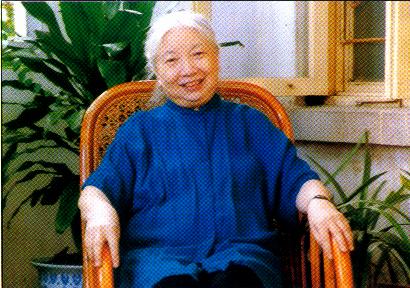Professor LI Xiaoju
Time:2012-9-27 8:52:50

Professor Li Xiaoju was born in
Guangxi
Province
in 1929. She completed her undergraduate studies at
Peking
University in 1953 with English language and culture as her major. Upon graduation she became a teacher at
Sun
Yat-sen
University
, and in 1970 came to Guangdong University of Foreign Studies (GDUFS) where she worked for many years as a professor and a language researcher until her retirement. In her career as a university teacher, she has taught undergraduate and graduate courses, supervised MA and Ph.D. students and served as the principal investigator of several provincial and national research projects relating to applied linguistics.
Professor Li distinguishes herself in two academic areas: English language teaching and language testing. As regards the former, she is particularly known as a pioneer in applying the communicative approach to foreign language teaching in
China
. In conformity with this approach she has initiatedand completeda textbook-compiling project, which ended up with a set of textbooks entitledthe Communicative English for Chinese Learners(CECL) and won a National Excellent Textbooks Award in 1992. The textbooks have been highly spoken of by some famous Chinese and international scholars like Professors Xu Guozhang, Hu Wenzhong, and E. Nida. Professor Xu, for example, praised the books as marking the modernization of foreign language teaching in
China
. The influence of her work on communicative language teaching also manifests itself in the publication of her articleIn Defence of the Communicative Approachin theELT Journalin 1984. The article is so well received that it has been included in the required reading list by some TESOL training programs such as the one offered by the British Council.
The other area in which Professor Li excels is language testing. As early as in the late 1970s, Professor Li was involved in work on a national English proficiency test, known as EPT and deemed equivalent to TOFEL in China. In 1985-89, she played a major role in the reform of the National Matriculation English Test (NMET, named as MET at that time). Based on her work and research for the test, she published a seminal articleHow Powerful Can a Language Test Be?The MET in
China
in theJournal of Multilingual and Multicultural Developmentin 1990. This article has made the language test reform in China known to the outside world. Her monumental contributions to the study of language testing can be seen in her bookthe Science and Art of Language Testing(1997), which has been used as a textbook in many language testing courses and regarded as the bible of language testing by many language teachers and language testing practitioners in China. Her outstanding feats and accomplishments in language teaching and testing are and will be remembered with gratitude.
